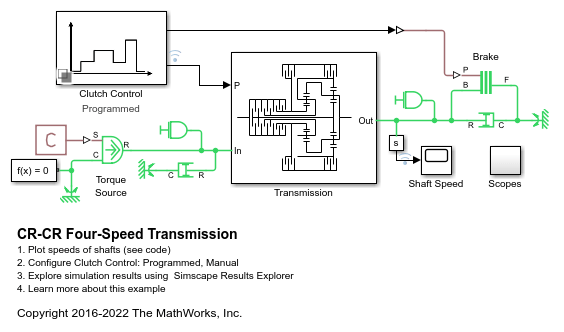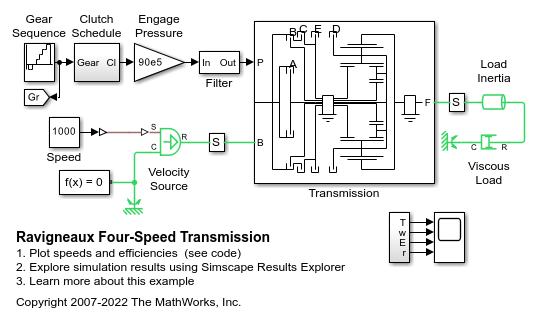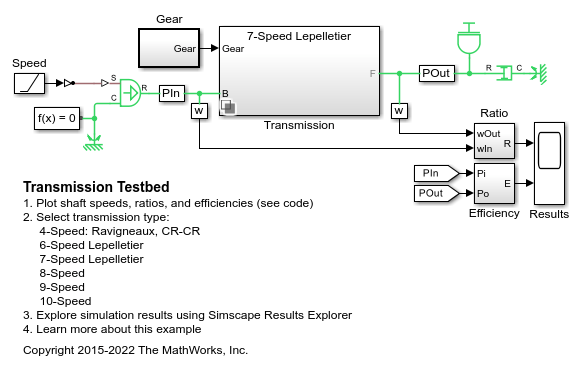Transmissions with Gear Ratios and Clutch Schedules
In a real drivetrain, you couple an input or drive shaft to one of many outputs or driven shafts, or to one driven shaft with a choice of several gear ratios. The drivetrain then requires several clutches to switch between gears. You couple one of the driven shafts or one of the gear sets by engaging one of the clutches. You then switch to another output shaft or another gear ratio by disengaging one clutch and engaging another.
To use multiple gear sets simultaneously, you can also engage more than one clutch at a time. Transmissions engage multiple gear sets at the same time to produce a single effective gear ratio, or drive ratio. Changing gears requires disengaging one set of clutches and engaging another set. You can specify the set of clutches to engage and disengage for each gear ratio in a clutch schedule. Designing a clutch schedule and shaping and sequencing the clutch pressure signals frequently constitute the most difficult part of transmission design. A realistic transmission model must also include losses due to friction and imperfect gear meshing.
Simscape Blocks
| 4-Speed CR-CR | Clutch schedule for a four-speed carrier ring-carrier ring transmission |
| 4-Speed Ravigneaux | Clutch schedule for a four-speed Ravigneaux transmission |
| 6-Speed Lepelletier | Clutch schedule for a six-speed Lepelletier transmission |
| 7-Speed Lepelletier | Clutch schedule for a seven-speed Lepelletier transmission |
| 8-Speed | Clutch schedule for an eight-speed transmission |
| 9-Speed | Clutch schedule for a nine-speed transmission |
| 10-Speed | Clutch schedule for a 10-speed transmission |
| Transmission | Abstract transmission for system-level driveline modeling (Since R2022a) |
Topics
- Transmission Design Principles and Best Practices
Lean the rules and guidelines for transmission modeling.
- Model a Two-Speed Transmission with Braking
Model a simple, yet complete, transmission.
- Model a CR-CR 4-Speed Transmission Driveline with Braking
Transfer motion and torque from one shaft and inertia to another using a realistic transmission model.



